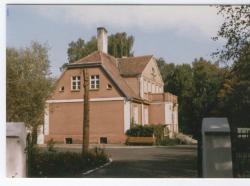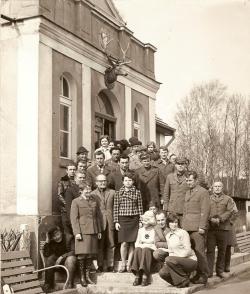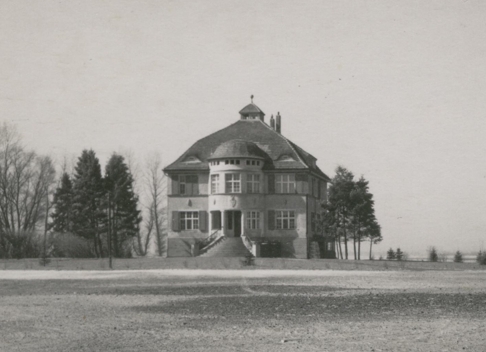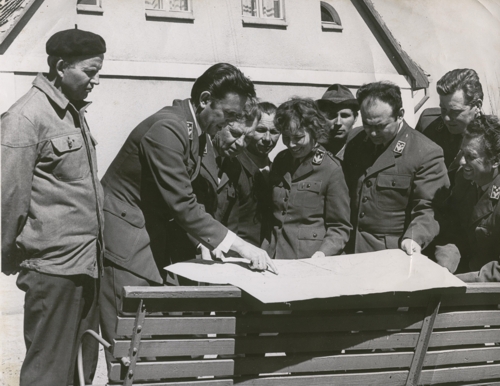 Asset Publisher
Asset Publisher
Polish forests
Poland is in the European lead, while concerning the area of all forests. They cover about 29,2 % of the country territory, and grow within the area of 9,1 million hectares. The overwhelming majority of the forests is state owned, of which almost 7,6 million hectares are managed by the State Forests National Forest Holding..
The number of Polish forest is still growing. The forestation rate of the country has increased from 21 % in 1945 to 29,2 % at the moment. Between 1995 and 2008, the forest area increased by 310 thousand ha. The basis for afforestation works is the "National Programme for Increasing the Forest Cover" (KPZL), assuming an increase of the forestation rate up to 30 % by 2020 and up to 33 % by 2050. Polish forests abound in flora, fauna and fungi. 65 % of the total number of animal species live there.
The forests grow in our country on poor soils, mainly because of the development of the agriculture in previous years. It influences the distribution of the types of the forest sites in Poland. Over 55 % of the forest areas is covered with coniferous forests. In other areas, there are forest sites, mainly the mixed ones. Their small part constitute alder and riparian forests – not more than 3 %.
In the years 1945 – 2011 the area of natural deciduous tree stands within the area of the State Forests National Forest Holding increased from 13 to 28,2 %.
Within the lowlands and uplands the most often occurring tee species is pine. It covers 64,3 % of the forest area of the State Forests National Forest Holding and 57,7 % of private and commune forests. In the mountains the predominant species is European spruce ( in the west) and European spruce with beech (in the east). Domination of pine is the result of carrying on sustainable forest management in the past. Once, the monocultures (crops or cultivations of one species) were the answer to the great demand of industry for wood. Such forests appeared to be quite fragile to climatic factors. They also were often the prey of pests' expansion.
In Polish forests, the share of other tree species, especially deciduous trees have been systematically increasing. The foresters have stepped aside from monocultures – that is why, they try to fit specific species of the forest stand to the natural stand, that would be proper for the given area. Thanks to that, in the years 1945 – 2011, the area of the deciduous tree stands within the lands of the State Forests National Forest Holding increased from 13 to 28,2 %. There occur more and more frequently the following tree species: oaks, ashes, maples, sycamore maples, elms, but also birches, beeches, alders, poplars, hornbeams, aspens, tilias and willows.
Our forests are the most often represented by the forest stands aged 40 to 80 years. The average age of the forest equals 60 years. More and more trees are of big size at the age over 80 years. Since the end of the Second World War, the forests' area has increased up to almost 1,85 million hectares.
Raport o stanie lasów w Polsce 2012
 Asset Publisher
Asset Publisher
 Asset Publisher
Asset Publisher
Historia Nadleśnictwa Trzebież
Historia Nadleśnictwa Trzebież
 Zdjęcie załogi nadleśnictwa podczas jednej z oficjalnych narad
Zdjęcie załogi nadleśnictwa podczas jednej z oficjalnych narad
 Była siedziba nadleśnictwa w Trzebieży
Była siedziba nadleśnictwa w Trzebieży
 Część pracowników nadleśnictwa na schodach wejściowych do biura.
Część pracowników nadleśnictwa na schodach wejściowych do biura.
W artykule prezentujemy historię powstania Nadleśnictwa Trzebież
Nadleśnictwo Trzebież zostało utworzone z dniem 01.10.1970 roku
(w miejsce dotychczasowych: Trzebież, Jasienica, Tanowo). Całość lasów Nadleśnictwa Trzebież należy do Puszczy Wkrzańskiej, której łączna powierzchnia wynosi 1550 km2.
Nazwa Puszczy pochodzi od zamieszkującego ją w przeszłości wieleckiego plemienia Wkrzan, należącego do grupy Słowian Zachodnich – Pomorzan. O wkraczaniu we wczesnym średniowieczu osadnictwa rolniczego na terenie Puszczy świadczy nazwa Trzebież (1202 r.). Klasztor augustynianów w Jasienicy na lewym brzegu Odry prowadził od 1260 roku intensywną akcję osadniczą, zakładając na nowinach leśnych wsie niemieckie. Chłopi uiszczali czynsz w pieniądzach, a także częściowo w zbożu i innych produktach rolnych. Przyległe do Puszczy Wkrzańskiej osiedle Jasienia było starym słowiańskim grodem. Na początku XIV w. książęta szczecińscy ofiarowali je wraz z olbrzymią częścią Puszczy Wkrzańskiej zakonnikom sprowadzonym z Paryża. Po reformacji wybudowany kościół i klasztor przechodziły różne dzieje i w końcu był przebudowany na pałacyk myśliwski książąt Pomorza Zachodniego.

Na pograniczu brandenbursko – pomorskim często zdarzały się wojny. Tam gdzie były korzystne warunki glebowe, mieszkańcy wsi wracali po zniszczeniach wojennych, gdy jednak uprawa roli dawała słabe plony, dawni osadnicy nie powracali i pola powoli zarastał las. Mało atrakcyjny rolniczo teren, niewątpliwie przyczynił się do zachowania zwartego kompleksu leśnego.
-
Przed II Wojną Światową 70% dzisiejszego Nadleśnictwa Trzebież stanowiło własność państwową (nadleśnictwo niemieckie), a pozostałe 30% to lasy byłej własności prywatnej. Niewielka powierzchnia omawianych lasów stanowiła własność klasztorną oraz miasta Szczecina i Polic.
-
Przed wojną istniał sztuczny podział powierzchniowy, który w dużej mierze wykorzystuje się do dnia dzisiejszego.
-
Użytkowanie lasu prowadzono głównie zrębami zupełnymi. Na siedliskach lasowych stosowano rębnię częściową w wyniku, czego powstały w południowej części nadleśnictwa drzewostany bukowe pochodzenia naturalnego.
-
Prace odnowieniowe przeprowadzano poprzez sadzenie i siew jednogatunkowy. Na żyźniejszych siedliskach wprowadzano w drzewostanach sosnowych podsadzenia dębem i bukiem tworząc drzewostany dwupiętrowe.
-
W okresie II Wojny Światowej szereg drzewostanów uległo zniszczeniu zwłaszcza na skutek pożarów. Najwięcej szkód zanotowano w sąsiedztwie Polic, gdzie znajdowała się fabryka benzyny syntetycznej, będąca celem licznych bombardowań.
-
W 1945 r. po II wojnie Światowej utworzono nadleśnictwa Trzebież i Tanowo. Dawne Nadleśnictwo Jasienia utworzono w 1952 r. z części wcześniej utworzonych nadleśnictw Trzebież i Tanowo oraz innych gruntów. Powierzchnia łączna byłych nadleśnictw w planie prowizorycznym urządzenia lasu wg stanu na 01.01.1952 r. wynosiła 22,5 tys. ha.
Użytkowanie prowadzono w zasadzie zrębami zupełnymi. Sporadycznie stosowano rębnię gniazdową. Masowe występowanie szkodników owadzich odnotowano w latach 1946 – 1948 oraz 1982 – 1983. Największe pożary miały miejsce w latach 1951 – 300 ha i 1959 r. ponad 600 ha.


 fot. Paweł Fabijański
fot. Paweł Fabijański
 fot. Paweł Fabijański
fot. Paweł Fabijański
 fot. Paweł Fabijański
fot. Paweł Fabijański


